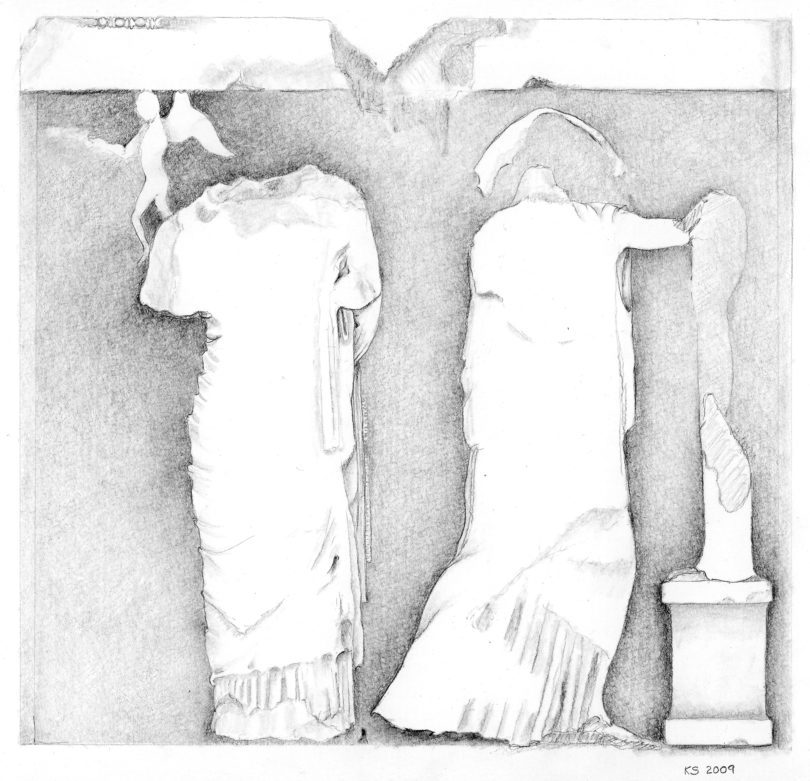The Georgia Museum of Art will host the exhibition An Archaeologist’s Eye: The Parthenon Drawings of Katherine A. Schwab Sept. 13 through Dec. 7. Schwab’s drawings help explain the most badly damaged relief sculptures of the Parthenon, the temple often considered the greatest work of ancient Greek art and architecture.
In 2005, Schwab, who is professor of art history at Fairfield University, began experimenting with graphite and pastel on paper to develop a new method of recording her observations of the monumental sculpted reliefs on the east and north metopes on the Parthenon.
A metope is a rectangular panel of the decorative frieze that extends above the columns of Greek temples. The monumental panels (1.5 x 1.2 meters) preserve complex and barely legible damaged surfaces, due to Christians’ deliberate damage of the sculptures of ancient gods and heroes in the sixth century A.D.
“Katherine Schwab’s new drawings of the Parthenon metopes are an epiphany,” said Mark Abbe, guest curator of the exhibition and assistant professor of ancient art at UGA’s Lamar Dodd School of Art. “The product of new close and prolonged scrutiny, they reveal the once fresh and dramatic narrative of the most badly damaged and overlooked sculptures of the Parthenon. These drawings bring us intimately close to the sculptures and allow us to see anew the dramatic narrative immediacy that defined much of the best Greek art of the High Classical period.”
The exhibition is divided into three sections. The first includes 16 pastel and graphite drawings of the east metopes, which focus on the Olympian gods fighting the Earth-born giants. The second section shows the sacking of Troy, and the third section includes a monumental, full-scale plaster cast of one of the metopes, provided by the Acropolis Restoration Service.
This exhibition is organized by the Bellarmine Museum of Art at Fairfield University, Creighton University and the Timken Museum of Art.






